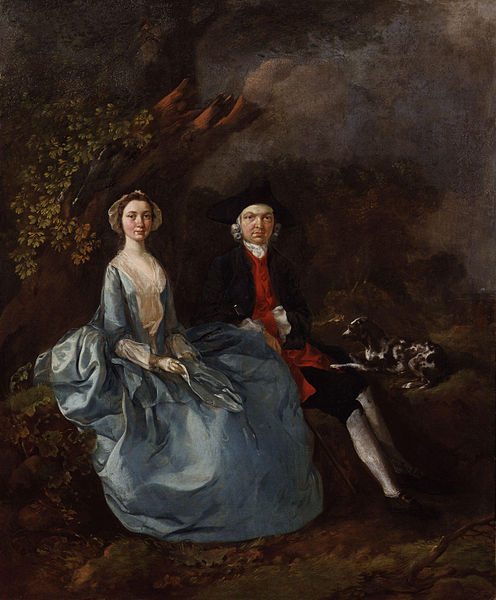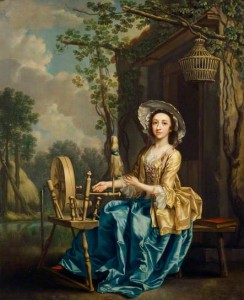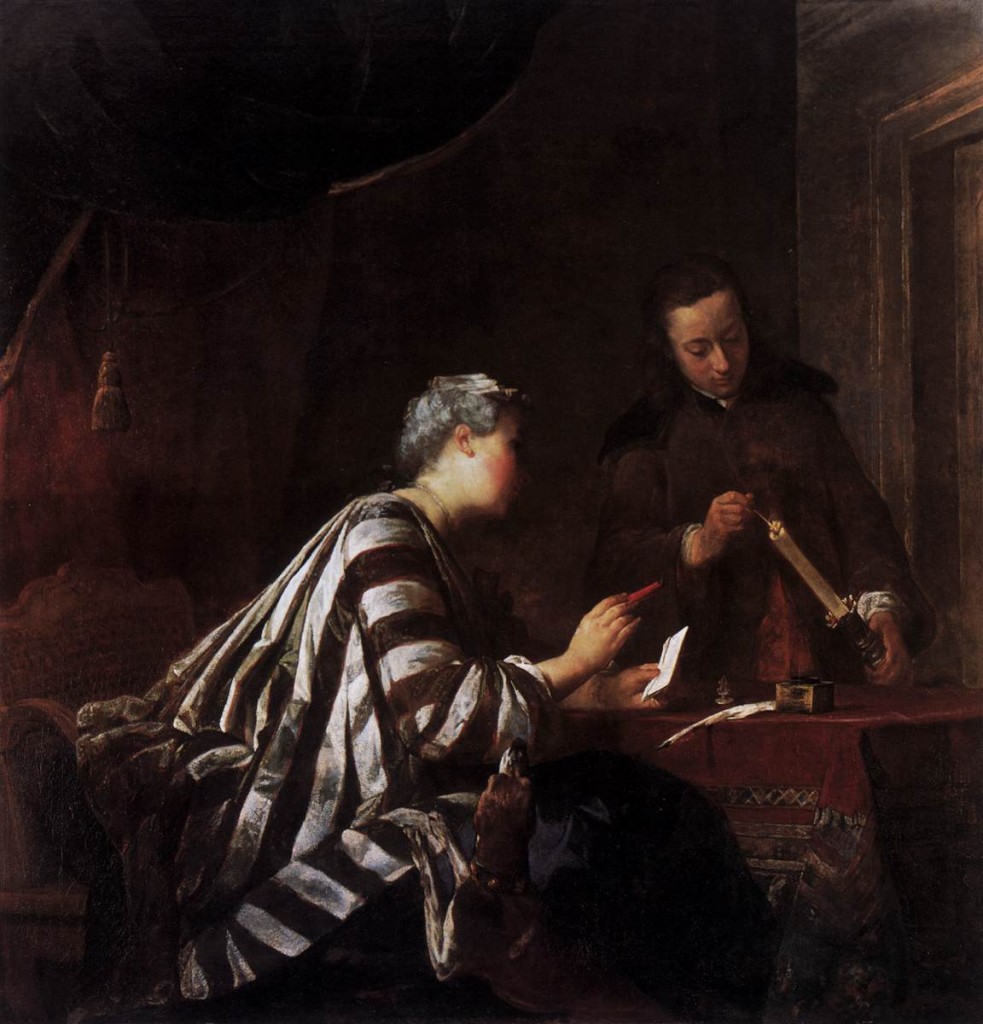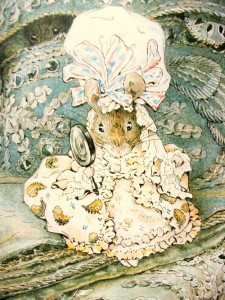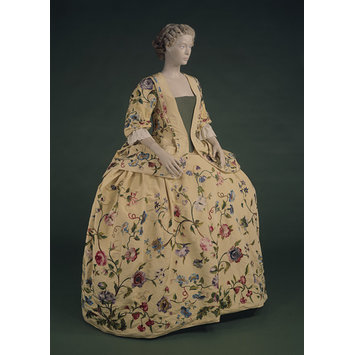A Short History of the Short Sack…
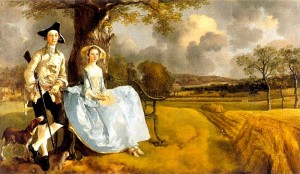
Mr and Mrs Andrew – Gainsborough – 1748-49
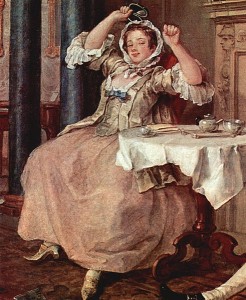
1742-45 – Hogarth
Though delightful, and always pretty, these garments are less in the limelight than perhaps they deserve. Out of the 20 odd dresses we have studied in the museums only one has been an ensemble that included a short sack – and that we had to dig out and ask for, determined to see one atleast. We must confess a general lack of research in their area.

P.Sandby – undated
Their history and their finer details are a little lost to us, if we’re honest and we have many questions. For example: Who wore them? When did they wear them? How were they considered: were they just thought of as a poorer lady’s alternative to the Francais gown or were they a gown in their own right? Through this page we hope to give our answers to these questions as best as we can through the research we’ve done. Please feel free to correct us if you read something that is amiss!
It seems that Pet-en-lair is another word (possibly the French version) of a Short Sack but this term can also get mixed up with ‘Caraco’s’ (in our understanding more of a jacket) and ‘Casaquin'(which seems to be always fitted and short, and also, in our understanding; more of a jacket!).
They crop up in the 30s, the 40’s, lots it seems in the 50s, and right through to the 80’s and 90’s: Pretty much for the whole century. It seems obvious to assume that the Short Sack would not be likely to stand up in it’s own right when it’s sister dress: the sack back gown had faded from popularity – this is not for definite, but the eras that we see the Short Sack appear in paintings, and the dates of the garments in the museums, do seem to also match up with the period for which the Sack Back gown was in use.
Let’s start with the images we have:
The Artists:
Gainsborough painted one atleast 3 times during the 50s – Mr and Mrs Andrew being the most well know (see above – 1st image). Mrs Andrew, at first glance looks like she is in just another Blue dress (what we call The Gainsborough Blue Dresses) but it does appear to be, in fact, a Short Sack. He also paints a Short Sack in Mr and Mrs Kirby in 1751-52 (another one of the Gainsborough Blue Dresses!) and a pink version in ‘A Woman with a Spaniela’ in 1749 – all dated around the 1750s. Sandby sketches a Short Sack atleast once (that we can tell anyway, from our little collection of images) and we have a Hogarth (1743-45 and look up – second left), a Hayman (1725-1750) and a Chardin (1733).
To be honest, until coming to make one we’d not really looked to deeply at this garment and we’re
rather shocked at how few paintings we have of the Short Sack in our over-10,000 18th c. image Collection. There are no doubt many more that have missed the first search and we shall add more as we find them to this page.
It seems from some of two of the Gainsborough images that the Short Sack could be worn as an Ensemble, ie to look like a gown; Short Sack flowing into matching petticoat which could look like one complete gown.
The Hayman and the Chardin paintings are unmatched outfits but it’s interesting that their style of painting is less formal – they are not really portrait paintings but themed images and that of everyday themes, so perhaps here, we get a tiny glimpse into the possibility that mis-matched Short Sacks were more likely to be Undress (Day wear) and full on matching gown ensembles rank a bit higher up the fashion ladder? Not perhaps processing into the Dress fashions but certainly climbing higher towards it. As you can tell, this is all guess work and probably forming more questions than answers but this is the wonderful thing about research is that all you’re really doing is churning up the ground and then peering at what you find.
The Costumes:
Besides the paintings though, there are a few examples in the museums. We’ve
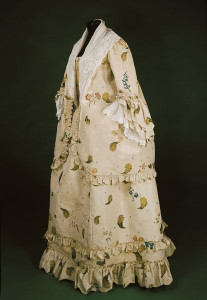
c.1760s – V&A
studied one in the V&A – a whole ensemble and one that Miss Beatrix Potter dressed a mouse character in for the book The Tailor of Gloucester, and although we’re not allowed to share any of our images from the reasearch session, the V&A have provided an image of their own online for all to view – click here to take you to the website. (And see below right). We are running out of space for all the images as we wanted to put in the little cute mouse that Beatrix dresses in this ensemble – it’s really sweet and you do get a good image of it. The V&A staff said she was so taken with the gown when she came for a visit one day that asked if she could use it in her drawings.
We’ve also got another gown from the V&A online collections website and another item that we’d forgotten we’d seen. It was in the midst of a study at the Museum of London where we were mainly looking at mid century men’s coats. The curator there knew so much about 18th c tailoring it was fascinating – endless notes were made at the expense of many drawings as we only had the morning there. This little number was very delicate and in a box and it was requested that it wasn’t even taken out of the box. But she was beautiful – back then, our first short sack – how had we forgotten!!! This is an image from their online collections as we a
ren’t allowed to use our images online from the Museum of London Study Sessions and because she wasn’t moved we don’t have many notes or measurements either. This is her here: (look down a little).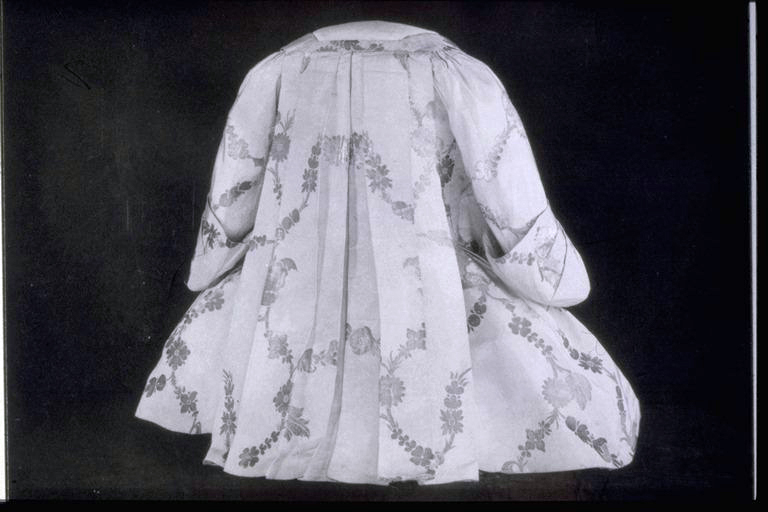
Answering Some of the Questions:…
Well to start off with – lets go for the biggy. Who wore them? It is also kind of tied up with another question in that list of circling thoughts and that is the question of: How were they considered: were they just thought of as a poorer lady’s alternative to the Francais gown or were they a gown in their own right? The simple fact that these items used less material doesn’t seem to’ve dropped them down a level in society. All of the examples in the Museums that we’ve looked at here in fact were made of silk. Not that disqualifies that from other levels of society – even the plebeian working folk have written records of owning silk. And not that the fact they were made of silk really proves the point of how they were considered but it is one tick in a box of building the picture of these garments.
The most invaluable picture we’ve found so far to re-creating this image of how these garments were considered is less in what is in the museums but what is in the art. The fact that ladies were considering it a good idea to be painted in them says alot and the fact that several of our images of street scenes, markets and fayres containing drawings of plebeian and lower gentry, feature NO Short Sacks also says alot.
Examples you may want to look are: May Day by Joseph Nollekins, Country Dancing by Hayman 1741-42, Milkmaids dancing by Hayman – 1735, the various market scenes by Angellis, Covent Garden City by Nebot. None of them seem to show women in Short Sacks. Whereas all of the above images – bar Hayman’s spinning girl are all images of ladies of a particular level of society wearing Short Sacks. This is only the beginning of this research for us so we’ll keep on adding as we find out more but so far our conclusion is they weren’t the poor ladies version of a Sack, nor were they only favoured by those who couldn’t afford so much silk for a sack. These seem to have been a style of gown in its own right and probably, from the images above, a kind of ‘Undress’ fashion.
The Cunnington’s in their book ‘A Dictionary of English Costume 900-1900′ describe it as thus: “PETENLAIR, PET-EN-LAIR, FRENCH JACKET.’ C.1745 to 1770s. (F) (Somewhat earlier in France.) A thigh-length or sometimes called knee-length jacket-bodice with sac-back, short elbow sleeves and often a stomacher front. Worn with a plain skirt (then called a Petticoat). ‘Inspir’d by thee, the skilful engineer Lopp’d half the sack and form’d the pet-en-l’air’ (1751 The Gentleman’s Magazine, ‘Hymn to Fashion’)”
Iris Brooke mentions a few things:
– In her book ‘Dress and Undress’, and on page 83 she uses this quote: ‘Mrs Rook…is just come from France and is come without a hoop, and tells me that except in their high dress nobody wears one. Their sacs are made proportionately narrow and short…’ Now what they mean by ‘Short’ is unclear here but this quote comes from 1742.
– In 1745, only a few years after the above quote there is a much clearer mention of short sacks (or sacs). ‘Elizabeth Montague writes of a gathering in 1745: ‘Such hats, capuchins and short sacs as were never seen…’ She then goes onto say: ‘The short sacs were probably similar to one the one illustrated (Fig 41 – a lovely little sketch she’d done – we’ll try and get it scanned in for you).
These are all quotes from ‘fashionable’ ladies letters and therefore adds to the weight that these were fashionable garments.

